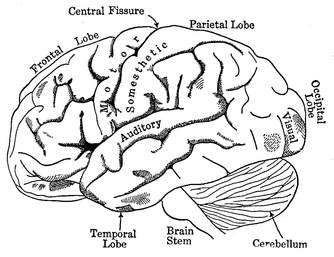AG·NO·SIA
/AGˈNŌZH(Ē)Ə/
what is agnosia?
Agnosia is a rare neurological condition that targets recognition. It is characterized by an inability to know, name, identify, and extract meaning from visual, auditory, or tactile impressions (Joseph, 2000). Despite being able to see, hear, speak, and think normally, a person with agnosia cannot recognize something or someone he or she once knew. The loss of the ability to recognize cannot be explained by a generalized loss of knowledge or inadequate attention to the task (Coslett, 2011).
As an example, an individual with visual agnosia would not be able to visually recognize an object when asked to name it despite being able to describe its visual characteristics (i.e. shape, colour). Another example is not being able to identify whether a presented sound is a "cough", as is the case with auditory agnosia. Moreover, if provided with the correct answer and then presented the stimulus again after a an extend period of time, an individual with agnosia would still be unable to correctly identify the stimulus.
As an example, an individual with visual agnosia would not be able to visually recognize an object when asked to name it despite being able to describe its visual characteristics (i.e. shape, colour). Another example is not being able to identify whether a presented sound is a "cough", as is the case with auditory agnosia. Moreover, if provided with the correct answer and then presented the stimulus again after a an extend period of time, an individual with agnosia would still be unable to correctly identify the stimulus.
what causes agnosia?
Causes of agnosia result in damage to different regions of the cerebrum that integrate perception, memory and identification (Huang, 2013). As a result, symptoms of agnosia develop due to the inability to retrieve information from those damaged areas of the cerebrum. For example, tactile agnosia is caused by lesions within the parietal lobe of the brain. Agnosia tends to only affect one cerebral pathway (Huang, 2013; Burns, 2010). Although an individual with visual agnosia cannot name an object when shown a picture of the object, the individual can immediately recognize the object if granted an opportunity to touch or hear a description of the object's appearance. On the other hand, another individual with tactile agnosia would be unable to recognize the same object on the basis of touch but can immediately name if when he or she sees the object. It is important to note that agnosia can carry some symptoms, vary in intensity, or be complete (Cloud, 2011).

